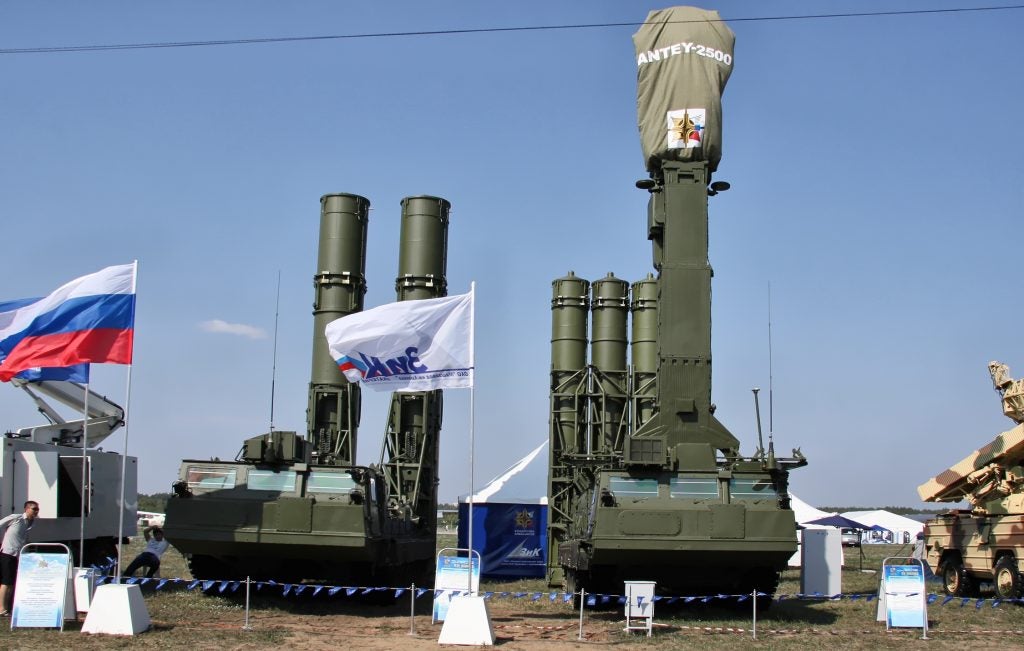Russia Reveals New Antey-4000 Air Defense Complex at Army-2020
Almaz-Antey has revealed the export version of the S-300V4 complex at Army-2020, called the “Antey-4000”. The complex is meant to provide mobile air defense to army units from a variety of cruise missile, ballistic missile, Precision-guided munition and other aerial threats. Like its predecessor, the export version of the S-300VM called the “Antey-2500”, the Antey-4000 consists of 4-tube launcher vehicles, 2-tube loader/launcher vehicles, all-round surveillance and sector scan radar vehicles, and a command post vehicle. All of these vehicles are mounted on tracked chassis for tactical mobility, unlike the S-300P and S-400 SAM systems.
The primary improvement of the Antey-4000 over the prior Antey-2500 and S-300VM systems is the enhanced engagement envelope for all targets engaged by the system. This is probably provided by a new set of radars on the Antey-4000, which likely involve Active electronically scanned array (AESA) technology as the export version of the S-500, the “Abakan” uses them.
Against aircraft and aircraft analogues (UAVs and cruise missiles), the new official “paper” range is 180km for the light 9M83ME missile, increased from 150km. For the heavy 9M82MDE missile, the paper range is expanded from 350 to 380km. The altitude ceiling for engagement is also increased from 30 to 33km for the 9M82MDE missile. Performance against ballistic missile threats is also improved, with range against theater ballistic improved from 30 to 45km and height of interception from 20 to 27km.
Nominally, the earlier Antey-2500 is also capable of firing the 9M82MDE and 9M83ME missiles, but due to its earlier iteration radars, the Antey-2500 complex was not able to take true advantage of the missile’s kinematic potential. The newer radars on the Antey-4000 are meant to fully leverage the enhanced speed of the newer missiles.
The S-300V-based systems are less popular on the export market than the S-300P-based systems, but they still have some operators, mostly “high-end” clients of Russian defense sales. Egypt is known to operate Antey-2500s, and Algeria previously expressed interest in them. India and Venezuela are also known to operate the earlier S-300VM, and may be interested in updating them to the Antey-4000 standard, given how ballistic missile and cruise missile threats are rapidly proliferating around the world.
They remain, however, only really relevant for forces that are looking for an “army” anti-ballistic missile solution to protect maneuvering forces, given the Antey-4000’s tracked chassis. In a fixed defense role, the S-300P-based missile defense systems are likely more economical to operate for most customers.

